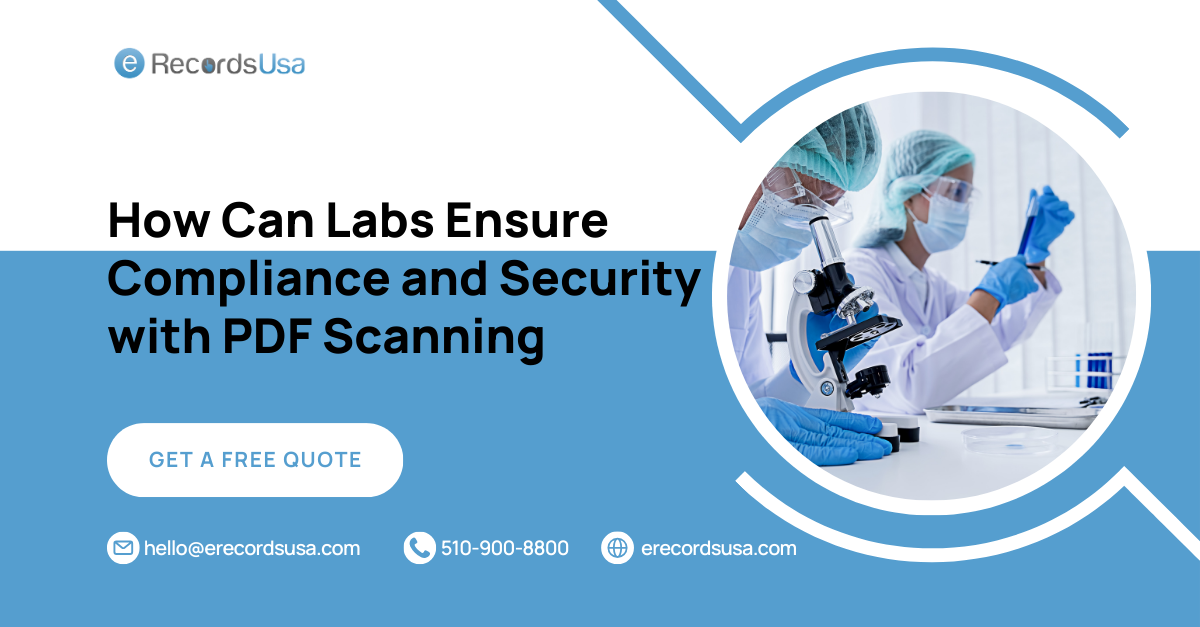In modern laboratories, the need for digitizing physical records such as lab notebooks is becoming increasingly essential. PDF scanning software has emerged as a crucial tool for transforming handwritten or printed lab notebooks into digital documents that are easier to store, manage, and retrieve. However, merely scanning documents into PDFs isn’t enough; applying best practices ensures these digital records maintain quality, searchability, and security.
By following a set of well-established best practices, laboratories can improve their document management workflows and enhance data accessibility.
Benefits of Using PDF Scanning Software in Labs
The advantages of using PDF scanning software go far beyond simple digitization. Here are some of the top benefits it provides to laboratories:
- Improved Data Access: Scanned lab notebooks become instantly accessible. PDF files can be stored digitally, making it easier to locate and share specific documents or research notes without sifting through paper.
- Searchability: Paired with Optical Character Recognition (OCR), PDF scanning enables full-text search within documents. This feature is valuable for handling large volumes of research data, allowing researchers to quickly locate specific keywords, dates, or experiment details.
- Space and Cost Efficiency: Physical lab notebooks consume valuable storage space. Digital PDFs reduce physical storage needs, resulting in cost savings and improving organizational efficiency.
- Enhanced Collaboration: Digitized lab notebooks are easily shareable with team members and external researchers. PDFs can be distributed via email, cloud platforms, or project management software, facilitating faster collaboration.
- Data Security: Storing lab data digitally enhances security by enabling encryption, access controls, and backup systems. This protects sensitive research data from loss, theft, or damage.
Best Practices for Scanning Lab Notebooks
Ensuring the quality and usability of scanned lab notebooks requires adherence to best practices that maintain document integrity and enhance accessibility:
- Use High-Resolution Scanning: Scanning lab notebooks at high resolution is essential for capturing fine handwriting, diagrams, and scientific symbols. A resolution of at least 300 dpi is recommended for clear and legible PDFs.
- Apply OCR for Searchability: OCR technology converts scanned images of text into machine-readable data, allowing researchers to search within documents. This feature drastically reduces search time, especially for specific information.
- Standardize File Naming and Metadata: Adopting a consistent file naming convention is essential. Include metadata such as experiment title, researcher name, and date in the file name to enhance retrieval and organization.
- Quality Check Post-Scan: After scanning, review PDFs to ensure all pages are captured and text remains legible. Quality checks are critical to verify OCR accuracy and clarity of diagrams and other elements.
- Organize Documents with Folders and Tags: Proper organization using folders and tags categorizes documents by experiment, project, or researcher, ensuring easy navigation even as document volume grows.
Ensuring Compliance and Data Security in Lab Scanning
Compliance with industry regulations and data security are critical in labs, especially for sensitive data. Here’s how to remain compliant and secure:
- Adhere to Industry Regulations: Labs, particularly in biotech, pharmaceuticals, and healthcare, must comply with HIPAA and FDA guidelines. Ensure scanned documents are encrypted and access-controlled to meet these standards.
- Encrypt Scanned Documents: Apply encryption to PDF files to ensure data security, limiting access to authorized personnel only.
- Regularly Back Up Digital Archives: Maintain cloud-based and physical backups to ensure data safety and easy collaboration from multiple locations.
- Audit Trails for Compliance: Use an audit trail system to track who accessed or modified documents, meeting regulatory requirements and ensuring all data handling is accountable.
Integrating PDF Scanning with Laboratory Systems
Integrating PDF scanning software with other lab tools optimizes document management:
- Integrate with LIMS: Linking PDF scanning software with Laboratory Information Management Systems (LIMS) creates a seamless data management ecosystem, making it easier to track experiments and retrieve data.
- Cloud Storage for Easy Access: Storing scanned documents on cloud platforms enables real-time access and collaboration from anywhere.
- Automate Document Workflows: Use automation to streamline tagging, organizing, and backing up scanned documents, saving time and reducing errors.
Common Mistakes to Avoid When Scanning Lab Notebooks
Avoid these mistakes to ensure optimal results:
- Low-Resolution Scans: Scanning at low resolution can make PDFs blurry. Always use at least 300 dpi to ensure document clarity.
- Failure to Apply OCR: Skipping OCR limits document searchability. Applying OCR is crucial for efficient data retrieval.
- Inconsistent File Organization: Use standardized file names and organized folders to ensure easy access.
- Neglecting Security: Always apply encryption and access controls to protect digital lab notebooks.
Conclusion
In modern labs, managing research data efficiently is essential. PDF scanning software provides an effective solution for digitizing and streamlining documentation. By following best practices like using high-resolution scanning, applying OCR, standardizing metadata, and ensuring compliance, labs can create an organized, secure, and easily accessible digital archive. This improves productivity, fosters collaboration, and allows researchers to focus on experiments rather than managing physical documents.
Why Choose eRecordsUSA for Lab Notebook Scanning?
At eRecordsUSA, we specialize in lab notebook scanning services using advanced PDF scanning software. Our services ensure high accuracy, security, and regulatory compliance. Here’s why labs choose us:
- High-Quality Scanning: We use high-resolution scanners to capture even the finest details of your lab notebooks.
- OCR-Enabled Searchability: Our OCR technology makes your scanned documents fully searchable, saving you time.
- Data Security and Compliance: We offer encryption and access controls, ensuring compliance with HIPAA and FDA standards.
- Tailored Solutions for Labs: From small to large-scale projects, we provide scalable, customized solutions to meet lab needs.
Ready to optimize your lab’s document management? Contact eRecordsUSA to learn how our lab notebook scanning services can help you create a more efficient, digital future for your lab.
